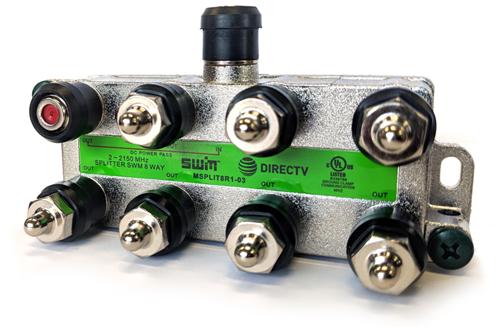Folks, Solid Signal is here for the DIRECTV DIYer. We’re here to help you make your dreams come true. But even we can’t do some forms of magic. Here’s a story that came from our customer service department.
It seems that there’s a person out there with a very old DIRECTV system. Several DVRs, a bunch of receivers, some TVs. He finally is getting to the point where he wants to share programs between devices. This sort of technology has been around for a while, but he hasn’t really wanted it… until now.
After searching around at a bunch of forums, he discovered that he needed receiver DECAs. Solid Signal still sells them, although we may be the last ones. That technology hasn’t been needed for new receivers since 2009. The internet told him, connect one of these bad boys to every receiver and you’ll be all set.
The internet was wrong.
What no one in the blogosphere realized
It seems like no one asked the question, “Are you running a SWM system?” Honestly I don’t blame them. SWM technology, which allows a single wire to carry multiple streams of video and networking, has been around in the DIRECTV world since 2008. It’s been the standard for new installs since 2009. It’s very rare to see a non-SWM system in a home anymore. Marine and RV systems, which tend to be more expensive to put in, sometimes have non-SWM systems just because redoing the installation costs too much. But in homes? It’s very, very rare that anyone’s doing things the old-fashioned way, even Solid Signal’s core DIY market.
You can’t use DECAs, or network your receivers over coax at all, unless you are using a SWM system. This means that the customer will have to do some upgrades, at least a few, if they want to share content. While these older receivers do have Ethernet ports, sharing programs over Ethernet can be very unreliable. Some receivers won’t do it at all. Others have ports that have failed at some point in the last 15 years and no one realized it. Either way, Ethernet should not be part of your plans.
Here’s why it doesn’t work
First of all, program sharing in a SWM system works because the system is smart enough to reserve a block of frequencies for network traffic. That block is between 475 and 625MHz. This frequency range isn’t generally used for satellite systems, but it can be in some cases. Also, older equipment can “leak” signals down into that range and there is no filtering to keep that unused signal out.
The big reason is the splitter, though.

Older systems can’t use splitters. They need a separate line from each receiver to the multiswitch. In the case of DVRs, they need two lines from the DVR to the multiswitch.
Coax networking works because the receivers and DVRs can see each other. This happens because these special splitters allow network traffic to go between ports. Multiswitches don’t do this, so the receivers just won’t see each other.
If you try to put this sort of splitter in place in an older DIRECTV system, things will just stop working. The older wiring scheme isn’t designed for them, and it will cause multiple receivers to try to get signals from the same line. If two receivers are requesting programs from different satellites, one will stop working, plain and simple.
How to fix this problem
Unfortunately, with very old equipment, there just comes a point where it’s the end of the road. If you want to share programs over DIRECTV, you’ll need a SWM system and equipment made after 2009. Considering that as I write this, that was twelve years ago, that’s not a lot to ask.
When you’re ready to make the leap, call Solid Signal now at 888-233-7563! Our experts can help you get the system you really want. DIRECTV’s call centers will try to push you into a system that’s the same for everyone. The technicians in our Novi, Michigan corporate offices will help you get the system that’s right for you. We’ll help you out with self-installation or arrange for an installer to come out and take care of everything!





